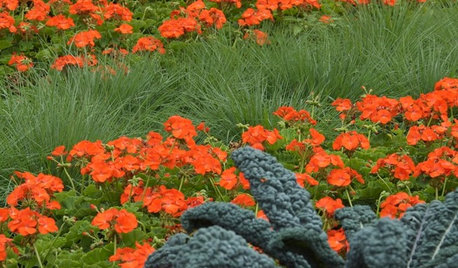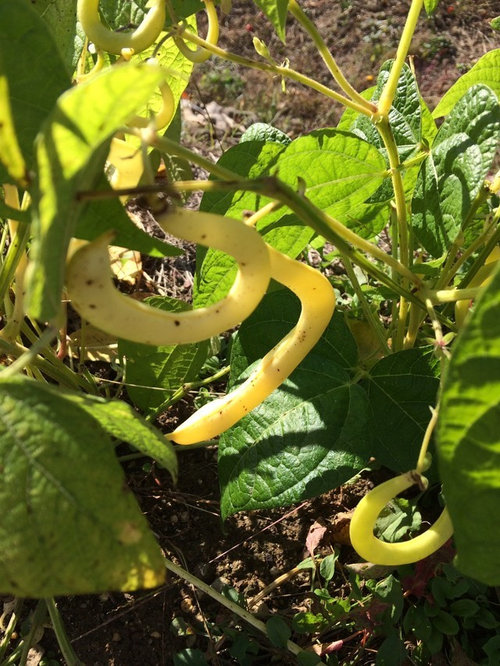Rust on beans? OK to eat?
2ajsmama
9 years ago
Related Stories

SUMMER FRUITS AND VEGETABLESSummer Crops: How to Grow Beans
Grow your own beans for amazing variety and healthy, convenient produce all summer
Full Story
KITCHEN DESIGN16 Scrumptious Eat-In Kitchens and What They Want You to Serve
Whether apple-pie cheerful or champagne sophisticated, these eat-in kitchens offer ideas to salivate over
Full Story
HEALTHY HOME12 Ways to Set Up Your Kitchen for Healthy Eating
Making smart food choices is easier when your kitchen is part of your support team
Full Story
KITCHEN DESIGNKitchen of the Week: Turquoise Cabinets Snazz Up a Space-Savvy Eat-In
Color gives a row house kitchen panache, while a clever fold-up table offers flexibility
Full Story
PRODUCT PICKSGuest Picks: An Arsenal of Tools for Healthy Eating
Make cooking and juicing easier whether you follow a vegetarian, vegan, Paleo, primal or other diet
Full Story
EDIBLE GARDENS7 Edible, Pretty Wonders of the Plant World
It's OK to like them just for their looks, but these flowers, trees and greens have a tasty side too
Full Story
MOST POPULAR7 Ways to Design Your Kitchen to Help You Lose Weight
In his new book, Slim by Design, eating-behavior expert Brian Wansink shows us how to get our kitchens working better
Full Story
KITCHEN DESIGNGoodbye, Island. Hello, Kitchen Table
See why an ‘eat-in’ table can sometimes be a better choice for a kitchen than an island
Full Story
COLORWhy You Should Give Brown a Chance
If 'blech' is your first response to brown, you're missing out on the opportunity for a warm-looking room that appeals to both sexes
Full Story
EDIBLE GARDENSHow to Add an Apple Tree to Your Edible Garden
Readily available, beautiful and fragrant, apple trees offer four-season interest along with crisp, juicy fruit
Full StoryMore Discussions







digdirt2
2ajsmamaOriginal Author
Related Professionals
Arlington Landscape Contractors · Tempe Landscape Contractors · Barrington Landscape Contractors · Bridgeport Landscape Contractors · Broadlands Landscape Contractors · Davidson Landscape Contractors · Indianapolis Landscape Contractors · Melrose Park Landscape Contractors · New Cassel Landscape Contractors · Vermilion Landscape Contractors · Boston Roofing & Gutters · Franklin Roofing & Gutters · Greenwich Roofing & Gutters · Mooresville Roofing & Gutters · Damascus Roofing & Guttersmyfamilysfarm
digdirt2
2ajsmamaOriginal Author
2ajsmamaOriginal Author
zizania
pattypan
Martin Smith